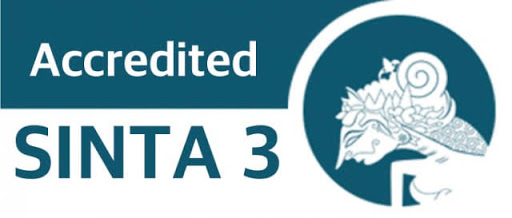The group embedded figure and pattern test for cognitive styles of deaf-mute students
DOI:
https://doi.org/10.12928/ijei.v1i2.2769Keywords:
deaf-mute students, field-dependent cognitive style, field-independent cognitive styleAbstract
This research aim is to describe deaf-mute students' cognitive style which seen in the condition of the Group Embedded Figure Test (GEFT). Data was collected through given by GEFT to four deaf-mute students of SLBN 2 Bantul and the data were analyzed through an interactive analysis of the Miles & Huberman model namely data collection, data reduction, data display, verification or conclusion inferred. From the test results, two students were categorized to Field-Dependent (FD) cognitive style and the other students were categorized to Field-Independent (FI) cognitive style. Students with FD cognitive styles tend to have difficulty focusing on something or analyzing the pattern into different parts. In contrary, students with FI cognitive style are more capable to accept separate parts of an overall pattern and analyzing the pattern into its components.
References
Andriyani, A., Budayasa, I. K., & Juniati, D. (2018). The blind student’s interpretation of two-dimensional shapes in geometry. Journal of Physics: Conference Series, 947(1), 012055.
Andriyani, A., & Juniati, D. (2019). The investigation of blind students’ misconception in constructing quadrilateral analytic definition using geometry’s puzzle. Journal of Physics: Conference Series, 1417(1), 012059.
Andriyani, A., & Maulana, M. (2019). Cubaritme in the trajectory learning of multiplication concept. Journal of Physics: Conference Series, 1188(1), 012049.
Geary, D. C. (2004). Mathematics and learning disabilities. Journal of learning disabilities, 37(1), 4-15.
Gottardis, L., Nunes, T., & Lunt, I. (2011). A synthesis of research on deaf and hearing children's mathematical achievement. Deafness & education international, 13(3), 131-150.
Hartini, S., & Kesumawati, N. (2015). Desain Pembelajaran materi pengolahan data menggunakan konteks adiwiyata melalui pendekatan PMRI di SD. Numeracy, 2(2), 13-31.
Keefe, J.W. (1979). Student learning style: diagnosing and prescribing programs. Reston. VA: National Association of Secondary School Principals.
McLeod, T. M., & Armstrong, S. W. (1982). Learning disabilities in mathematics—skill deficits and remedial approaches at the intermediate and secondary level. Learning Disability Quarterly, 5(3), 305-311.
Miles, M. B., & Huberman, A. M. (1994). Qualitative data analysis 2nd an expanded source book. California: Sage Publication.
Nunes, T. (2020). Deaf children, special needs, and mathematics learning. Encyclopedia of Mathematics Education, 181-183.
Schmeck, R. R. (1988). Perspectives on individual differences: Learning strategies and learning styles. New York: Plenum Press.
Thompson, J. (2010). The essential guide to understanding special educational needs. Harlow: Pearson Education Limited.
Witkin, H. A., Moore, C. A., Goodenough, D. R., & Cox, P. W. (1977). Field-dependent and field-independent cognitive styles and their educational implications. Review of educational research, 47(1), 1-64.
Yuping, L. (2000). Initial Investigation of Mental Health of Deaf-mute Students [J]. Chinese Journal of Special Education, 4, 003.
Downloads
Published
Issue
Section
License
Authors who publish with this journal agree to the following terms:
- Authors retain copyright with the work simultaneously licensed under a Creative Commons Attribution License that allows others to share the work with an acknowledgement of the work's authorship and initial publication in this journal.
- Authors are able to enter into separate, additional contractual arrangements for the non-exclusive distribution of the journal's published version of the work (e.g., post it to an institutional repository or publish it in a book), with an acknowledgement of its initial publication in this journal.
- Authors are permitted and encouraged to post their work online (e.g., in institutional repositories or on their website) prior to and during the submission process, as it can lead to productive exchanges, as well as earlier and greater citation of published work (See The Effect of Open Access).




